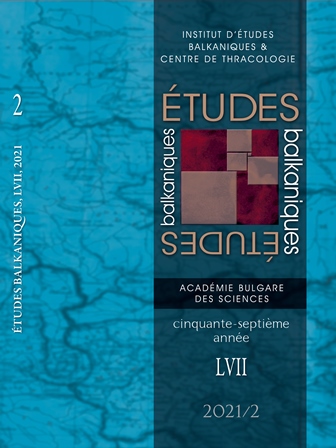THE AMALFITANS IN BYZANTIUM: MERCHANTS, MONKS, AND POLITICAL FIGURES, 9th – 13th CENTURY
THE AMALFITANS IN BYZANTIUM: MERCHANTS, MONKS, AND POLITICAL FIGURES, 9th – 13th CENTURY
Author(s): Liliana SimeonovaSubject(s): History, Diplomatic history, Economic history, Military history, Political history, Middle Ages, 6th to 12th Centuries, 13th to 14th Centuries
Published by: Институт за балканистика с Център по тракология - Българска академия на науките
Keywords: Byzantium; Amalfi; Trade; Diplomacy; Charities; Monasteries; Churches; Translations; Latin East.
Summary/Abstract: In the tenth through the thirteenth century, trade ties in the Mediterranean world were strengthened by a vast trade network that sprawled over the entire coastal area. The Amalfitans played a major role in its creation and subsequent enlargement. Constantinople, which was the nexus of transmarine trade in the Eastern Mediterranean-Black Sea region, became an important outpost of the Amalfitan merchants, who plied their trade in the Mediterranean. Although Amalfi never was a ‘Byzantine dominion’ in the strictest sense of the word, it managed to forge a special relationship with the Empire, which was both enduring and mutually advantageous. Byzantium, for its part, strove to keep Amalfi in its sphere of influence by bestowing imperial titles upon Amalfitans. In the course of time, Amalfi became one of the rising commercial powers in the Mediterranean world, with a mercantile class that was wealthy and politically influential, not just at home but in Constantinople and Egypt as well. As the network of their commercial contacts sprawled across the Mediterranean world, the Amalfitans became active in diplomacy, cultural patronage, charities, religious affairs and monasticism, translation and transmission of texts. The work of Amalfitan translators in Byzantium contributed to the strengthening of the ties between the eastern and western Christians. From the late 900s to the late 1200s there were Amalfitan religious establishments in Byzantium. Prominent eleventh- and twelfth-century Amalfitans took upon themselves the realization of important political tasks while acting as patrons of arts, literature, and charitable works. Their manifold activities made them highly visible in Mediterranean history. In the twelfth century, the gradual decline of Amalfi’s Levantine trade had an impact on Constantinople.
Journal: Études balkaniques
- Issue Year: 2021
- Issue No: 2
- Page Range: 189-226
- Page Count: 38
- Language: English
- Content File-PDF

